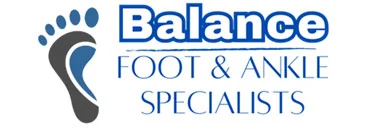![Do Bunion Correctors, Taping or Splints ACTUALLY WORK? [Studies] 2 Do Bunion Correctors, Taping or Splints ACTUALLY WORK? [Studies]](https://images.rapidload-cdn.io/spai/ret_blank,q_lossless,to_avif/https://i.ytimg.com/vi/almioYjdWGY/maxresdefault.jpg)
Do Bunion Correctors, Taping or Splints ACTUALLY WORK? [Studies]
🦶We review the studies on Bunion correctors, bunion taping, bunion splints & bunion pads. Can these reverse bunions naturally?🦶
More Bunion Videos:
Bunion corrector treatment: https://youtu.be/8yKY4Rf-OGk
Foot Exercises & Strengthening Guide: https://youtu.be/ZI0sANYDF6M
Home Bunion Treatment: https://youtu.be/Nfif1nEiNJk
9 Best Joint Pain Supplements: https://youtu.be/8CVHgrf-FLQ
Big Toe Joint Pain:
Gout: https://youtu.be/APtHQYtditY
Hallux Rigidus (OsteoArthritis) https://youtu.be/x6rtE5wfhf0
Bunion Pain: https://youtu.be/Nfif1nEiNJk
Bunion Surgery: https://youtu.be/xanqYxYnWJE
Bunion Splints: https://youtu.be/mVNluTffe2c
Sesamoiditis: https://youtu.be/ItwfjjX2_Uc
Bunion splinting and taping are non-surgical treatments for bunions, a common foot condition in which the big toe deviates from its normal position and points towards the other toes. These treatments aim to provide support to the affected foot and reduce pain and discomfort associated with the bunion.
Bunion splinting involves wearing a device that helps realign the toe and reduce pressure on the bunion. These devices can be worn during the day or at night and can be made of various materials such as silicone or plastic.
Bunion taping involves applying tape to the affected foot to help hold the toe in a more neutral position and prevent it from rubbing against the inside of the shoe. This can help reduce pain and discomfort associated with the bunion.
Several studies have examined the long-term results of bunion splinting and taping. One study published in the Journal of Foot and Ankle Research found that individuals who used bunion splints for six months experienced significant improvements in foot function and a reduction in bunion pain. Another study published in the same journal found that bunion taping was effective in reducing pain and improving foot function in individuals with mild to moderate bunions.
While these studies suggest that bunion splinting and taping can be effective in managing the symptoms of bunions, it is important to note that these treatments may not be sufficient for severe cases of bunions. Additionally, these treatments may not be effective for everyone and may need to be used in conjunction with other treatments such as exercises or custom orthotics.
Overall, bunion splinting and taping are considered safe and non-invasive treatments for bunions. It is important to consult with a healthcare professional for personalized advice on the most appropriate treatment options for bunions.
👉 Shoes 👈
Best Shoes:
Best Products: https://www.michiganfootdoctors.com/recommended-products/
📢Come See Us in Detroit, Michigan, Berkley Michigan; Bloomfield Hills, Michigan, Lansing Michigan; and Grand Blanc Michigan📢
If you are in Michigan, consider seeing us at our clinic: https://www.michiganfootdoctors.com/.
https://g.page/r/CaxJ9b-O6o27EAE
👉 LINKS 👈
Disclaimer: This video and description contain affiliate links, which means we may receive a commission if you click on one of the product links. I appreciate your support of this channel!
DISCLAIMER:
Dr. Tomasz Biernacki received his Doctor of Podiatric Medicine degree from Kent State College of Podiatric Medicine in 2013; he completed his Surgical Reconstructive Foot Surgery & Podiatric Medicine Residency in 2017; he completed 2 separate traveling Fellowships in Diabetic Surgery, Skin Grafting & Nerve Surgery. He is double board certified in Podiatric Medicine and separately in Foot & Ankle Surgery. His use of “doctor” or “Dr.” about himself solely refers to that degree. Dr. Biernacki is a licensed podiatrist in Michigan. This video is for general informational purposes only. It should not be used to self-diagnose and is not a substitute for a medical exam, cure, treatment, diagnosis, prescription, or recommendation. It does not create a doctor-patient relationship between Dr. Biernacki and you. It would be best if you did not change your health regimen or diet before consulting a physician and obtaining a medical exam, diagnosis, and recommendation. Always seek the advice of a physician or other qualified health provider with any questions regarding a medical condition.

![Do Bunion Correctors, Taping or Splints ACTUALLY WORK? [Studies] 1 do bunion correctors taping or splints actually work studies](https://images.rapidload-cdn.io/spai/ret_blank,q_lossless,to_avif/https://www.michiganfootdoctors.com/uploads/2023/05/do-bunion-correctors-taping-or-splints-actually-work-studies.jpg)
